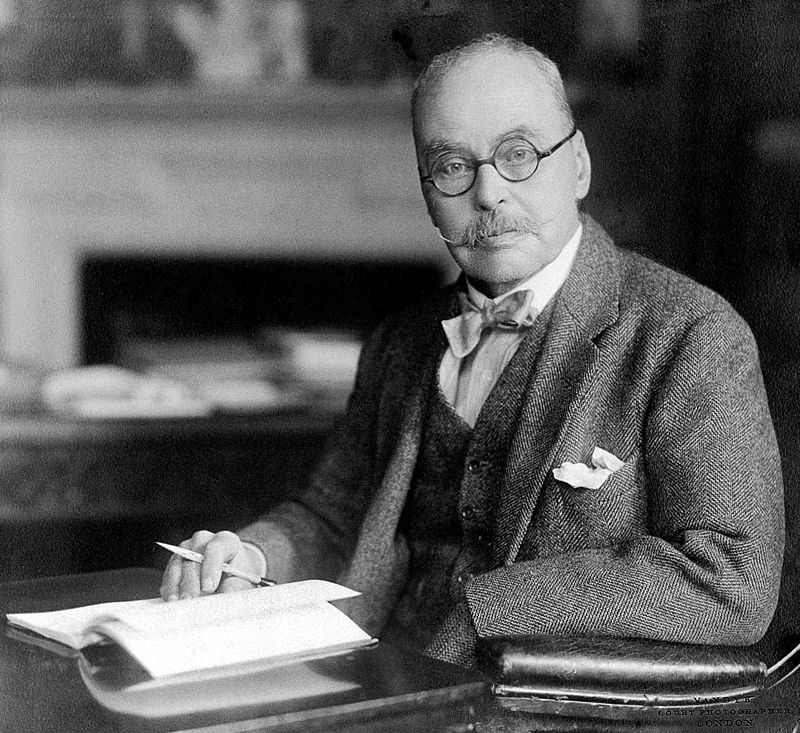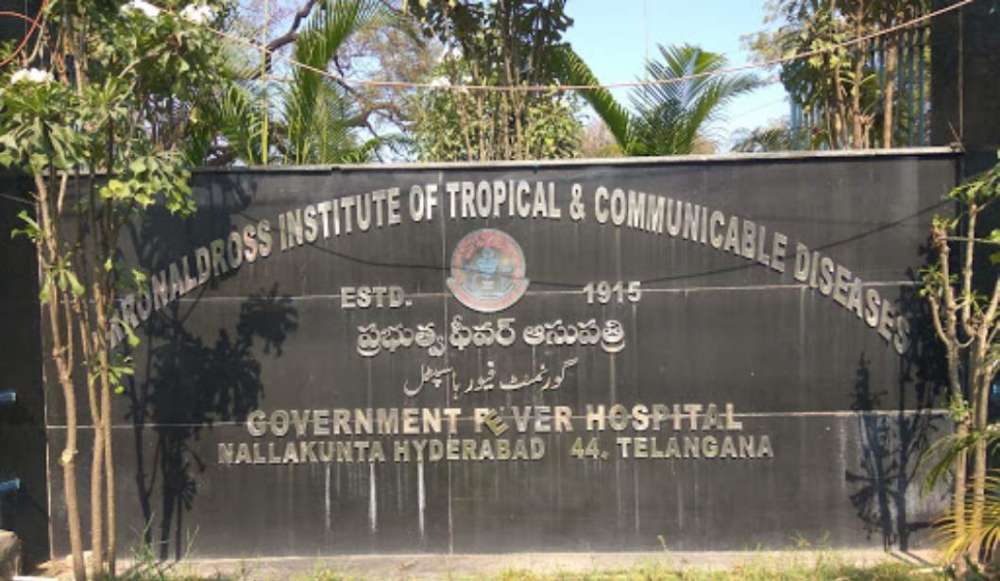Why Hyderabad’s ‘Fever Hospital’, Was Named After This Nobel Prize Winning Doctor
Here’s the story of why a hospital in Hyderabad was renamed after the renowned Sir Ronald Ross, who won the Nobel Prize for Physiology and Medicine in 1902.

On 20 August 1997, the chief minister of erstwhile Andhra Pradesh, N Chandra Babu Naidu, renamed the Fever Hospital in Hyderabad to Sir Ronald Ross Institute of Tropical and Communicable Diseases (Government Fever Hospital), affiliated to Osmania Medical College.
(Above image sourced from Alfonso Marzal/Recent Advances in Studies on Avian Malaria Parasites)
This happened exactly 100 years after Sir Ronald Ross, an Almora-born British medical doctor who became the first British winner of the Nobel Prize for Physiology and Medicine (1902), famously discovered the female Anopheles mosquito’s role in the transmission of malaria among humans.
He made this discovery in Secunderabad, when he was with the British Indian Army stationed at Begumpet, serving as a regimental medical officer in the Indian Medical Service (IMS).
Early Interest in Malaria
Born on 13 May 1857, a few days after the legendary Indian revolt against the British East India Company, Ronald was the eldest of ten children of Sir Campbell Claye Grant Ross, a general in the British Indian Army, and Matilda Charlotte Elderton. Despite his wish to become a writer, his father had him enrolled at St Bartholomew’s Hospital Medical College in London, and in 1881 he was appointed surgeon in the IMS, a military medical service in British India. After serving for about seven years in South India, he took a one-year furlough leave, and became the first IMS member to get a diploma in public health and even studied the growing field of bacteriology.
Upon his return to Madras (now Chennai) in 1889, he was sent on various field service assignments in Burma, Secunderabad, Berhampur and the Andaman Islands. After this, he went on another year-long furlough to England before coming back to India in 1894.
It was around this time that he became interested in malaria following the works of Charles Louis Alphonse Laveran, a French Army surgeon, and Sir Patrick Manson, a Scottish physician.
“After duty in various parts of the Madras Presidency, Burma and the Andaman Islands, he became interested in malaria and, having originally doubted the parasites’ existence, became an enthusiastic convert to ‘Laveranity’ (the belief that malaria parasites were in the bloodstream) when it was demonstrated to him by Patrick Manson in 1894 during a period of home leave,” notes this description in the London School of Hygiene and Tropical Medicine.
Also, what caught his attention was the number of soldiers in the British Indian Army who were falling ill to malaria. According to a 1992 paper by CV Apte published in the Medical Journal, Armed Forces India, “Malaria was then so rampant that out of 300,000 men in the Indian Army, 100,000 men were admitted every year to hospital.”
He began his research work in 1894 in Secunderabad when he was with the 19th Madras Infantry stationed at Begumpet. Despite his deep interest in investigating if mosquitoes were connected to the transmission of malaria, he was often called away from his research in malaria-infested areas and sent on regular IMS duty to contain other epidemics (like the cholera epidemic in Bangalore in 1895) and other official duties.
Of course, this was a cause of real frustration for Ronald, and he eventually shot off a letter to his superiors requesting that he be “put on special duty for a few months after relief at Bangalore to enable him to investigate the truth of Dr Patrick Manson’s theory of the Transmission of the infection of malaria by means of the mosquito.”
Major Discovery
According to Apte’s paper, Ronald regularly wrote to Manson, detailing his investigations. Among the many experiments he conducted was to “drink water contaminated by mosquitoes and their larvae to see whether he could contract malaria – he didn’t.”
Following further experiments and dissection of several mosquitos, he posited the theory that it could be its bite that is transmitting the disease among humans.
It was by 1896, when his research began to bear some genuine fruit.
“Finally, in September 1896 in Calcutta he showed that the bite of the mosquito caused malaria in birds. A year later, on his return to Secunderabad, he demonstrated that it was the ‘dapple-winged mosquito’ which transmits malaria to human beings. 1898 was when he demonstrated the parasitic forms in the salivary glands of the mosquito. In July 1898 while writing from Calcutta he stated, ‘…And I feel that I am almost entitled to lay down the law by direct observation and tracking the parasite step by step – malaria is conveyed from a diseased person or bird to a healthy one by the proper species of mosquito, and is inoculated by its bite’,” notes Apte.
The final breakthrough in 1897 came while dissecting the stomach tissue of an Anopheles mosquito, who had previously fed on a malaria-infected patient, and found the malaria parasite Plasmodium falciparum after painstaking research. In 1898, Sir Patrick presented these findings to the Edinburgh meeting of the British Medical Association on his friend’s behalf. There is no question hospitals around the world have benefitted from this discovery.
“[Ronald] Ross continued his research in India and demonstrated that mosquitoes could serve as intermediate hosts for bird malaria. He showed that the route of infection was through the bite of a mosquito with experiments on four sparrows and a weaver bird. The account of these findings was presented to the British Medical Association in July 1898. In 1902, Ross became the first Briton to be awarded the Nobel Prize for Medicine,” notes the British Library’s Untold Lives blog.
Disgruntled by the bureaucracy at the IMS, Ronald finally resigned in 1899 and returned to England, where he worked for the then newly established Liverpool School of Tropical Medicine, first as a lecturer and eventually a professor of tropical medicine. One of his key functions at this school was to investigate and devise schemes to control the spread of malaria in West Africa.
Besides West Africa, Ronald would go on to undertake many other expeditions to do the same in countries like Egypt (1902), Panama (1904), Greece (1906) and Mauritius (1907-08) as well. In 1901, he was inducted as a Fellow of the Royal College of Surgeons of England and also a Fellow of the Royal Society as well. Despite his achievements, his spirit of service never diminished. In fact, during World War I (1914-1918), he was appointed consultant physician on tropical diseases, helping Indian troops stationed in Dardanelles suffering from dysentery.
Towards the end of the war, he was appointed consultant physician to the British War Office, and by 1919 received an honorary post with the Ministry of Pension. Following the war, he continued working with the Ministry of Pensions, while also continuing his research on malaria, writing his autobiography and travelling back to the Indian subcontinent and Malaya.
On the behest of former UK prime minister HH Asquith, the Ross Institute and Hospital for Tropical Diseases was founded in 1926, where he was made director-in-chief. The institute was later incorporated into the London School of Hygiene & Tropical Medicine. He eventually passed away on 16 September 1932 (aged 75) in London after a prolonged illness.
Today, the site of his 1897 discovery is home to the Sir Ronald Ross Institute of Parasitology, Osmania University.
Coming back to the Sir Ronald Ross Institute of Tropical and Communicable Diseases in Hyderabad, it was once colloquially known to locals as the ‘Koranti Dawakhana’ (Fever Hospital), originally located at Errannagutta, a small hillock outside the city, but then shifted to Nallakunta area of the city, a residential settlement.

What’s fascinating about this is that ‘Koranti’ is a corrupted version of the English word ‘quarantine’, and continues to serve patients even today amidst COVID-19. It was Mir Osman Ali Khan, the then Nizam of Hyderabad, who in 1915 established this hospital to treat sick people devastated by a cholera epidemic and isolate them from populated parts of the city.
What’s more is how the hospital was renamed after a medical doctor who discovered the means by which another deadly disease like malaria is transmitted, and barely three months ago, the World Health Organization (WHO) announced the long-awaited malaria vaccine for children.
It’s quite an extraordinary set of events, and also marks the city of Hyderabad, as the centre of one of humanity’s greatest achievements in medicine.
(Edited by Divya Sethu)
Like this story? Or have something to share? Write to us: [email protected], or connect with us on Facebook and Twitter.
This story made me
- 97
- 121
- 89
- 167
Tell Us More
We bring stories straight from the heart of India, to inspire millions and create a wave of impact. Our positive movement is growing bigger everyday, and we would love for you to join it.
Please contribute whatever you can, every little penny helps our team in bringing you more stories that support dreams and spread hope.



















